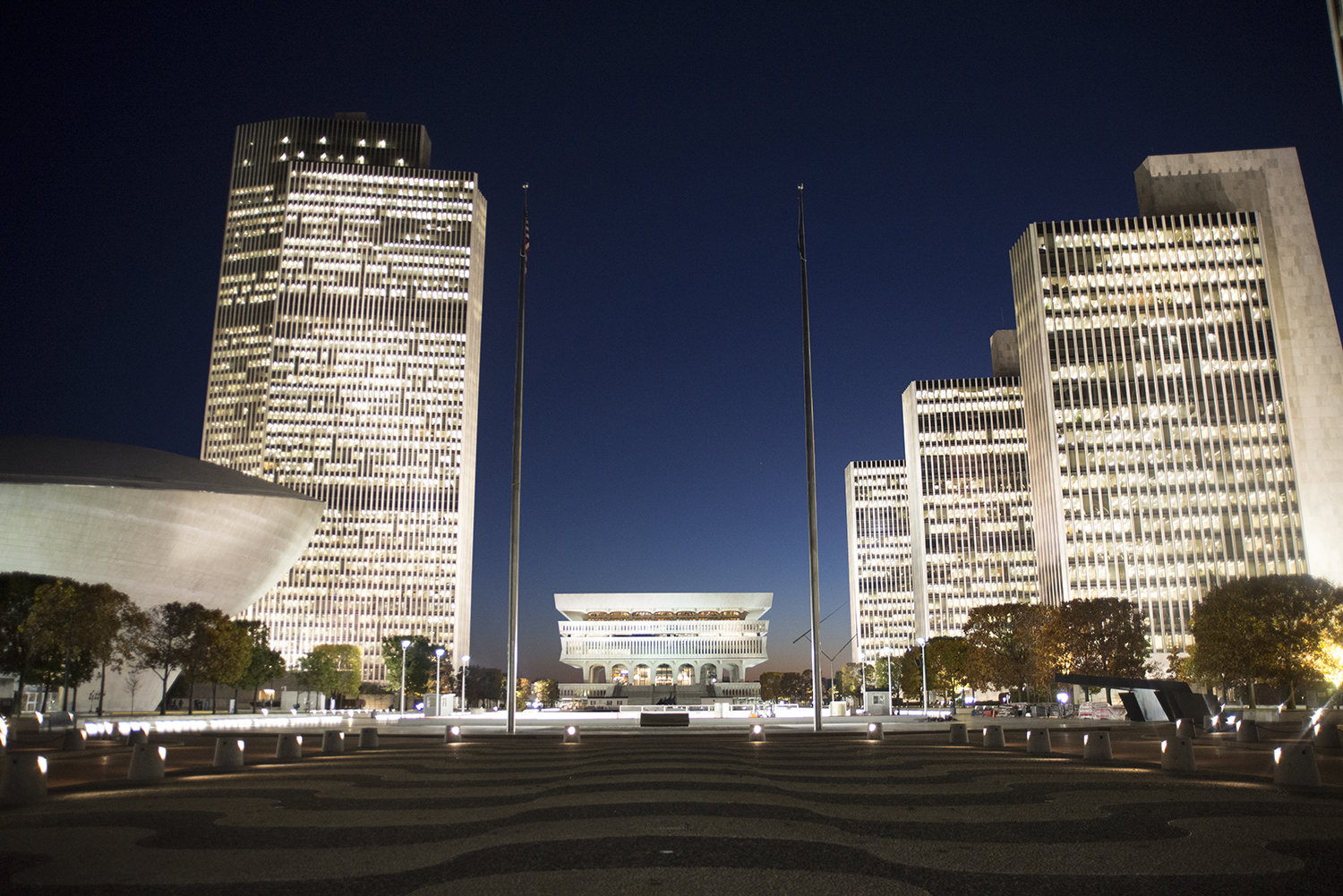Don’t stop thinking about tomorrow. / Don’t stop, it’ll soon be here.
Eighteen years ago, Bill Clinton made that the theme song in his successful campaign for the presidency. The theme plays to one of voters’ most deep-seated desires – the hope that we are making a better tomorrow for our children.
Governor Paterson is reprising the song in the budget he delivered to the Legislature today. The proposed financial plan shows that, absent any change, the status-quo spending trend would outpace projected revenues by more than $7 billion. Even in a large, high-cost state like New York, that’s a big gap that requires serious thinking and action – as the Governor has said repeatedly.
And yet the budget problem for the fiscal year starting April 1 is only a fraction of the gap that the Governor and Legislature will have to close in 2011. That’s where “don’t stop thinking about tomorrow” comes in.
The state Budget Division now projects a $14.3 billion chasm between trendline spending and revenues for fiscal 2011-2012. No one, in Albany or any other state capital, knows how to eliminate a gap that size without highly undesirable increases in taxes, cuts in services, or borrowing and budget gimmicks that shift today’s costs to tomorrow’s taxpayers. For illustration, the Legislature could impose a 10 percent surcharge on all personal income taxpayers, raise the sales tax by 2 cents on the dollar and cut school aid by 10 percent – each pretty much unthinkable for any elected official – and still have to find a couple billion dollars more.
The last time the state faced a problem analogous to these looming budget gaps was in 2003. A national recession and the devastation of the 9/11 terrorist attacks had knocked revenues down, while spending continued to increase by two times the inflation rate or more. The Budget Division projected a gap of $9 billion.
The budget enacted in that environment included elements that either are simply unavailable now, or would be rejected by most policymakers and voters. It securitized New York’s share of a national settlement with tobacco companies that had been producing $1 billion or so each year, so that $4.2 billion could be used immediately. The effect was to take revenue that was originally intended to balance budgets over the course of decades (including this year’s), and apply those dollars instead to short-term balance. No such multibillion-dollar pot is at hand now.
The 2003 budget also imposed a $1.6 billion income-tax increase on upper-income earners, bringing the top rate to 7.7 percent. Such a move probably isn’t available now, either. The state is already drinking from that well, having raised the top rate to 8.9 percent as part of the 2009 budget. Of course, tax rates can always go up still further, but no one in Albany is calling for another hike from the highest level in 25 years. Even some supporters of previous increases believe a double-digit rate would be economically damaging, and make the state’s already volatile revenue stream even more erratic.
The 2003 budget also included a $460 million increase in the sales tax, several hundred million dollars of new business taxes, and $150 million in new gambling revenue. Such steps might be politically achievable again, but few would consider them desirable.
Budget-balancing actions on the spending side included a reduction of $200 million, or 1.4 percent, in school aid – an amount illustrating the political difficulty of restraining spending in Albany even during the worst of fiscal crises. With a modest cut in state aid, local spending increases of twice the inflation rate, and few if any changes to help school districts control their costs, school property taxes across the state rose that year by an average 7 percent.
After all that, the 2003 fiscal plan left a budget gap of $5.7 billion for the next year. State leaders have, to one degree or another, rolled over such gaps every year since.
At least one major change has taken place since 2003, though. The state’s annual spending on debt service is up by $2 billion – not to pay for new bridges or other capital investments, but mostly to repay borrowing that funded operating expenses years ago. That extra $2 billion is a big part of the problem Albany faces this year, next year and for the foreseeable future.
The budget Governor Paterson recommends for 2010-2011 also includes unpopular steps – but would help avert more damaging cuts, revenue increases and borrowing in the coming years. Maybe it’s time to start thinking about tomorrow.
An edited version of this commentary also appeared in the New York Post.

